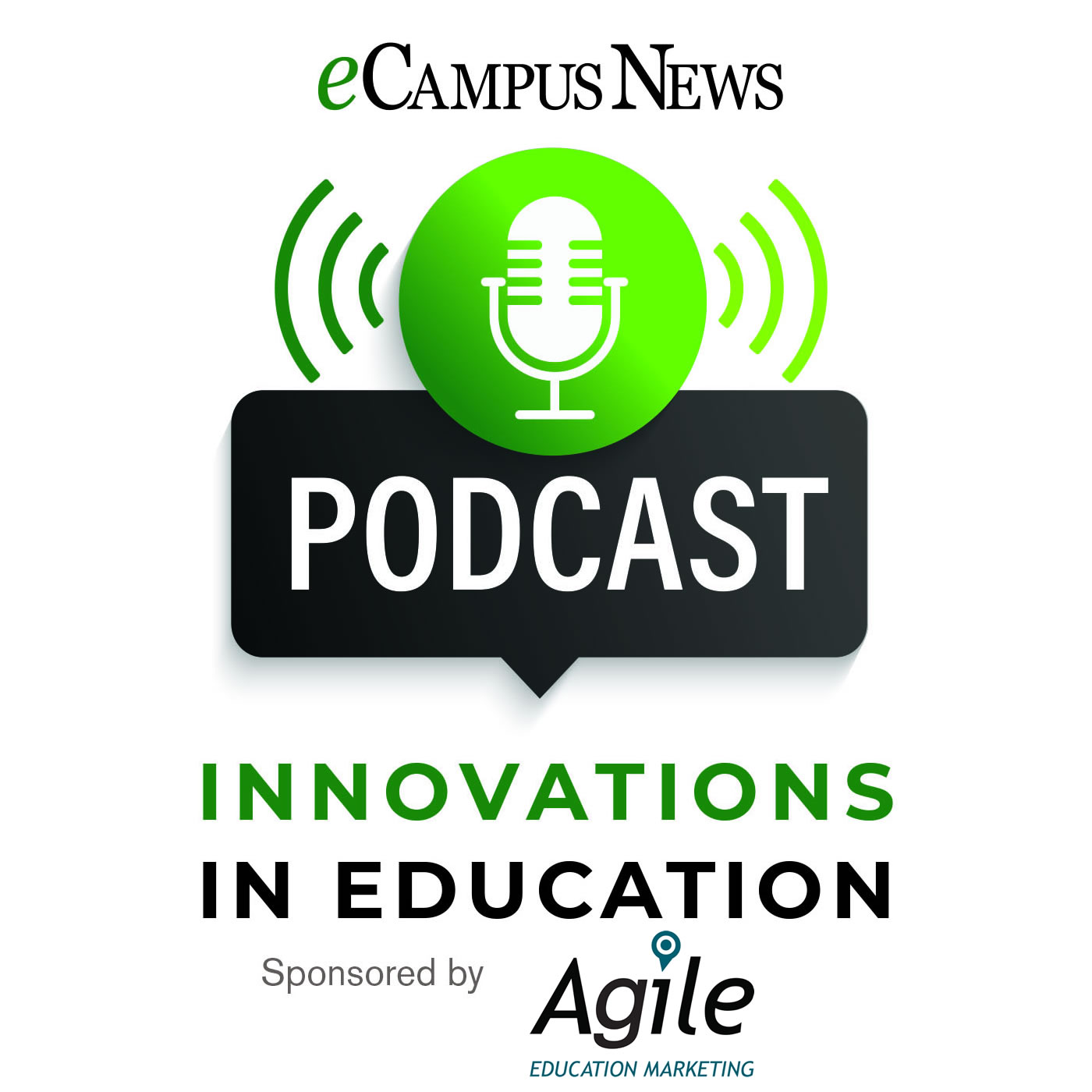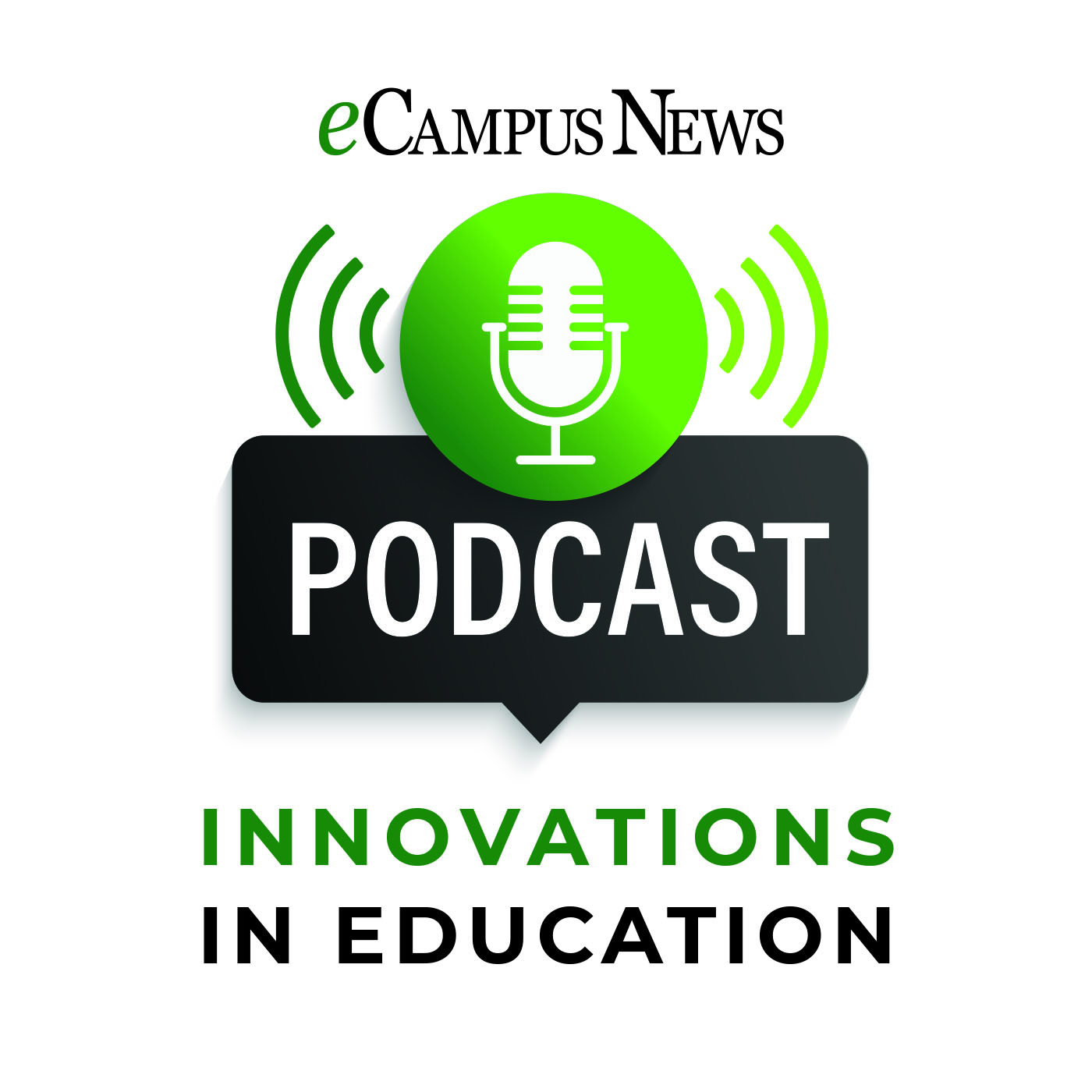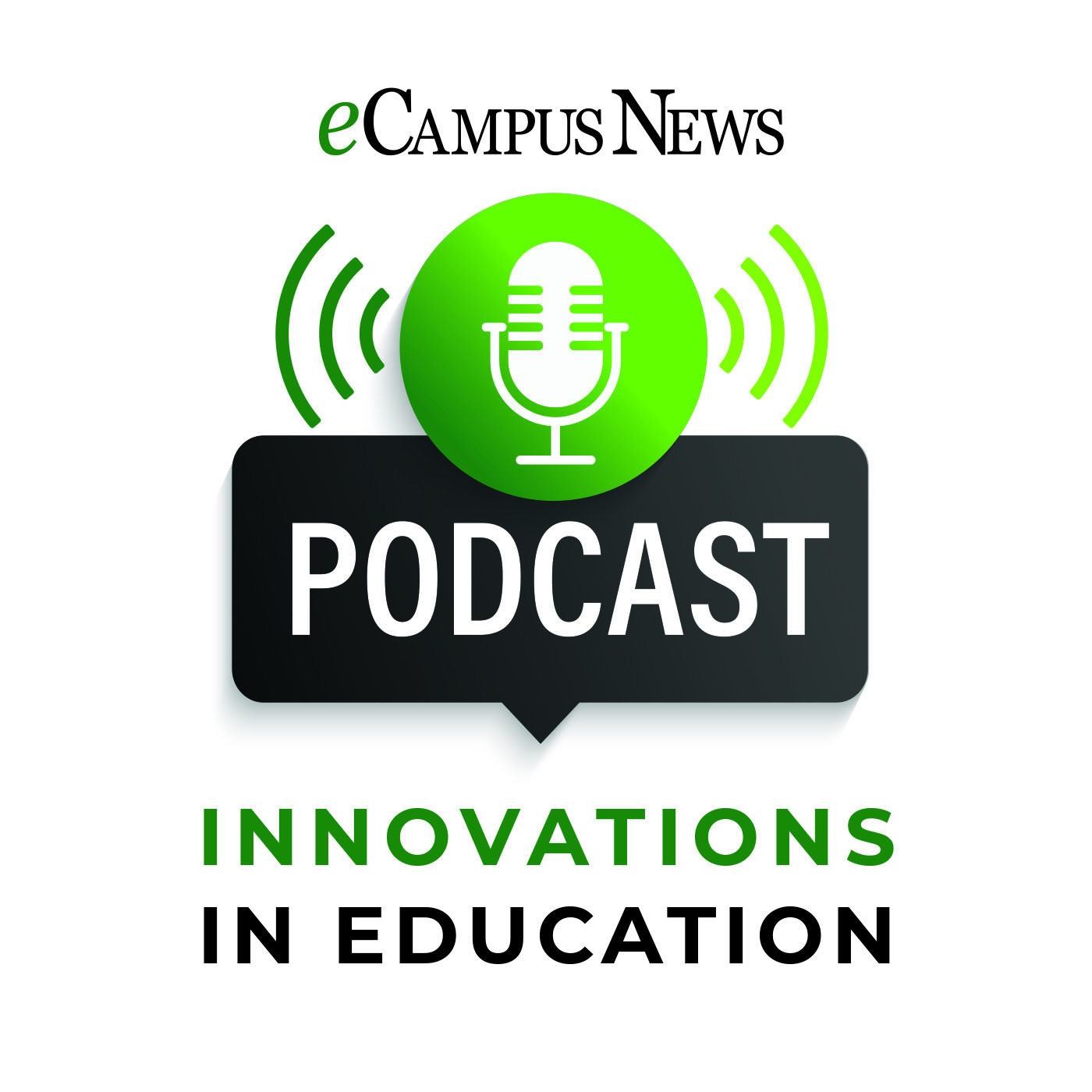Episode Transcript
Kevin Hogan
OK. Hello and welcome to the latest episode of Innovations and Education Ecampus News podcast on the latest and greatest happenings in the higher Ed, Ed tech space. My name is Kevin Hogan. I'm content director for E Campus News, and I'm happy you found this podcast today. In this episode, Cara Eldersville she's the strategic consultant for Global Solutions Services at anthology. Discusses the results of their most recent research surrounding the once and needs of this most current crop of post pandemic college students. A lot of data in this report, some of the highlights include mental health is a top challenge for college students. 44% report that they're feeling anxious or overwhelmed about expectations. And and workload. 41% of them cited managing mental health and Wellness as their top challenge. Also student needs and leader perspectives is a balancing act. 33% of students believe that expanding the range of relevant courses and majors is an element that could help fellow students complete their degree. Also, obviously technology. That there are opportunities to improve the student experience through the use of technology. 90% of students report having access to a self-service portal. However, 38% feel that that information is not that easy to consume. So there's a lot to unpack in this White paper and a lot of good reportage. Give it a listen and let us know what you think. Kara, thanks so much for joining me today. I really appreciate. Right.
Kara Eldersveld, Strategic Consultant, Global Solution Services at Anthology
Yeah. Thanks for having me.
Kevin Hogan
And let's jump right into it. Let's talk about the report. Let's talk about the genesis of the report. Give us the lowdown.
Kara Eldersveld
Yeah, absolutely. You know, it's interesting. We kind of got together almost a year ago talking about kind of the need for further understanding right after the pandemic, just a little bit of an outlier. There was a lot of assumptions going out there, right? If then. But what? And kind of almost categorizing these prospective students and current students in different ways. So we really wanted to not only inform, but also kind of set a baseline after the pandemic to just kind of state of the Union of what this is right now as we think further how are those you know learners changing and things of that nature. So a little bit of a compass from that perspective. So we wanted it from a global standpoint as well. I mean it was obviously a global pandemic. And just how that influences kind of perception and how the US could compare. So we looked at over 5 and really kind of conducted this survey of 5000 higher education leaders and current students across 11 countries. And then this report specifically we narrowed in. To 255 students and 251 educational leaders responding and really, that theme was figuring out and trying to refine teaching, learning the services, education providers, you know, can connect with students on learning environments preferences. So kind of across the gamut of really what is that? Higher education experience today and how their schools measure up versus how the educational leaders think that they're delivering for their students.
Kevin Hogan
Yeah. And as you look at it, any big surprises mean anything while you're going through the process like, wow, that's that's kind of interesting.
Kara Eldersveld
Yeah. I think one of the most jarring figures across the board is really looking at, you know, modality preferences. Right. And it it is overwhelming, almost 64% in some sort of online capacity. And really, if you look at other benchmark studies of what that is in the progression of that. That is a tipping point. I think from that perspective of a true preference of what it is interesting part is that university leaders here. And they have kind of ranked that as one of their top priorities of how they want to deliver. But from a student perspective, it was almost table stakes, right? So I think that's something that's interesting is that, you know, when you think that you're delivering for that student and you know, hitting it out of the park because you're offering online, they do not see that as a differentiator.
Kevin Hogan
Right.
Kara Eldersveld
But something you know, it's just a standard across the board seeing kind of the numbers play out across of where they prioritize versus the expectations was an interesting juxtaposition between the two, for sure.
Kevin Hogan
Definitely. I think from a a faculty perspective and administrative perspective, people of a certain age, let's say all of this still remains a little bit of a novelty when it comes to education, right, in terms of remote modalities or high flex or whatever you want to call it. But this generation just endured a beta test of almost two years of. Having to use it, so why not?
Speaker
Is it?
Kara Eldersveld
The really great way to put it, and I think universities have an opportunity as the the research shows to say then what's next, right. So the modality is the table state and what was an overwhelming one in three students really saying the range of relevant courses and majors. As an element is there is their number one component they want rich content. They want dynamic content, relevant content programming that meets their needs and where they want to go to dot dot dot is their second. You know the third priority of outcomes and career advancement and things of that nature. So they really correlate. The learning content and experience to exactly how they're going to be successful outside. So for lack of a better word, the pros. Of the institution is number one in the student mindset, which speaks to the modality as opposed to the experience in the clubs and things of that nature, which is also important from a sense of belonging. But really it's brass tax. What is the product I want to learn and I want outcomes.
Kevin Hogan
Yeah, the level of self-awareness of today's student is is really impressive. And I think that goes along with one of the results that I I found interesting was that the ideas of mental health being front and center that probably the top three or four, it seems there's one of the the biggest challenges. Again, I have to think that that is another byproduct of this pandemic era that we've kind of gone through, where people are more aware of, of those those traumas, but also those challenges, but also what they need as tools going forward.
Kara Eldersveld
100% and if you look at it, it really collectively whether that be from mental health to like academic stress and what that is and kind of moving those together with 64%, right. So it's a pretty overwhelming response of saying that that is the number one you know a large support between the two. It actually supersedes all of them if you add them together. Of what they need and what's interesting is institutions were aligned. They kind of were. Neck and neck of where they felt that that spell on their priority list, both from a student perspective and institutions perspective. Which is a. Really good thing to see. That was something that was really promising in my eyes to say, you know, that this is a priority for institutions as well and the correlating component of that though, right, is how do we make sure that they don't have those academic stresses. How do we support from a mental health standpoint and students were saying, you know, we want reminders we need like, what is that academic support? We want mentoring and tutoring and things that. Nature. And on the flip side, the institutions felt that they were delivering that right. I mean, it's multifaceted from an academic support and mental health perspective certainly, but some of these components where we were having them ranked of what the students preferred and how they wanted to be connected. With those kinds of resources, even career advising and things of that nature, institutions say, check, check. We've got those covered. And the interesting part and we were discussing this internally a little. Bit is how that is communicated to the student. Do they know that those resources exist, especially going full circle? If you're hybrid or. I mean, if it's an on campus 3:50, office hour window of what that is that doesn't necessarily meet the needs of those students, those non traditional students. How do you offer something that's 24/7 virtual things of that nature? And I think that's an opportunity for institutions to say at the core. We have this, but is it accessible in the way that students are thinking that they need it?
Kevin Hogan
Yeah. And especially in terms of the dynamics, when you're talking about mental health and issues such as that, I know on the K12 side as well as on the higher Ed side. They found that this particular we want to call them modality, right? I mean that this is the learning modality, but communications. Technique makes it easier for people maybe to talk about issues over zoom than sitting in somebody's.
Kara Eldersveld
100% I mean it's, I mean it's definitely becoming more and more of the norm, right, bringing some of those barriers down. And I think you know kind of shifting the mentality of saying this is an opportunity to meet the student where they are. You know so often if we look historically and a lot of the just an analysis and studies of institutions at large, they were a destination. Right, which can be a beautiful thing, right? It could be an escape. It can be, you know, a home away from home. Those kinds of components. But at the same time. I think institutions need to. Deliver. And that's a hard it's a hard gig, right? I mean this, it's it's multiple things that they need to do. It's still this destination where sense of belonging clubs, social connections, all import ranking important to institute or for students. But on the. Flip side, they need to meet the student where they are and become more accessible and bring down some of those walls and barriers and thinking about ways different ways and more values that they can connect with. That's and I think the nice thing with that too though, is that these the little nudges seem to. Be really really. Resonating with students, and if we think about this in the context. Of like the the generational like, who are who? Are we really in or, you know, surveying here and we're looking at kind of the Gen. X and even as we think in the future. Kind of. Alpha and that nature. It's really integrated, right in terms of technology and integrated experiences. It's really seamless in what that looks like. And so a lot of that is just these technology prompts and innovation that, you know, nudges if reminders of what that looks like and it's not hand holding, but it's integrated into their daily lives. They can be multifaceted individuals on their on that campus.
Kevin Hogan
Yeah. Now, when you talk about 5000 different institutions, are these results scalable? I mean, if we're we're looking at the results from a. Community College versus University of Michigan.
Kara Eldersveld
Yeah, really great question. I think that looking at the type of student is a really, really important lens. And so I think you have different circumstances and different personas, a working, non traditional student in a Community College aspect versus a full time on campus student at University of Michigan. However, the mental state of what that looks like is becoming more and more blended in terms of not necessarily resources, but the expectation that that student has of themselves, right. It is very, very aligned across the board from a Persona perspective, career outcomes and you can dial that up or dial that down. Based on resources and circumstances of. What that looks like? But they need to see the return on investment. They need to see the trajectory and the pathway, right? And I think that the interesting part here too is. That they want options. But not too many, and that is across the board, right? So a lot of times, you know, when the world is your oyster that creates paralysis. And so I think the fine tune of what this is is not trying to be everything to everyone, but at that institution, what do you do really well creating a. Odd Sandbox and an innovative sandbox in that area because that student shows your institution for a reason and that that's their lifestyle needs out. But then, you know, allow them to play around in that sample box of what that is and create really nice confined pathways for success and career outcomes. So I think when when you look at that lens from a scalability perspective, you have to put your institutional strengths in that and assume that they're, you know, attending that your institution for the right reason from that perspective.
Kevin Hogan
Yeah. Now for our listeners or for our. Leaders. Is there a way to prioritize some of these results in terms of the take away for what they need to do next this year and years going forward?
Kara Eldersveld
Yeah, I went round and round on this because the a lot of the inputs influence each other, right? And so I think it's a, an asterisk that we should note that all of these are important, right? Holistic kind of experience of what that looks like they all. Will make up of them of a greater whole and, but at the same time there's limited resources and we wanted to be able to give directions to institutions of what to prioritize. I would say the number one thing is really looking at what programs you are offering your students in terms of majors, alternative credentials, things. And so it look, you know, what does that look like and is that relevant in your Economic Community? Is that delivering on relevant workforce needs? Which also I mean kind of creates in terms of innovation is how quickly can you respond to that, right? How can we adjust and I mean they want strong internships, workforce connection, you know even from a hybrid perspective kind of that work experience and tangible case studies and results. Those are kind of the takeaways from that. And so I think if you start there. And then transaction like right after that is that that product is there? What that experience is and how you're helping those students absorb that new kind of content around from a mental health and academic perspective, you'll be in a nice sweet spot in the in next. You know, year or two.
Kevin Hogan
That's great stuff. You know, a lot of stuff for our readers to chew upon in that report. I really appreciate you taking the time to to break it down for us.
Kara Eldersveld
Yeah, absolutely. I appreciate the opportunity. Like you said, I think each one of these categories could be a chapter in itself and there's actually a couple of books around that was right. But the last thing I would say is really look at these results from a generational perspective. It gives it a nice little lens to cut through and to help prioritize what that looks like and hopefully meet the student where they are.
Kevin Hogan
Excellent. Well, Cara, thanks again. I really appreciate. And that wraps it up for this episode of Innovations and Education here at E campus. I hope you enjoyed it, and please go up online to ecampusnews.com to see our other podcasts as well as a great amount of information that University School leaders can use to do their job. Once again I'm Kevin Hogan, and thanks for listening.


